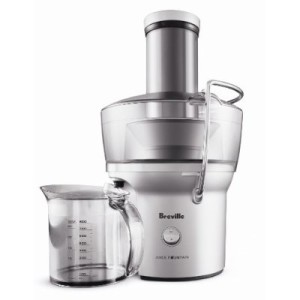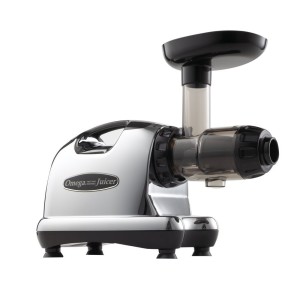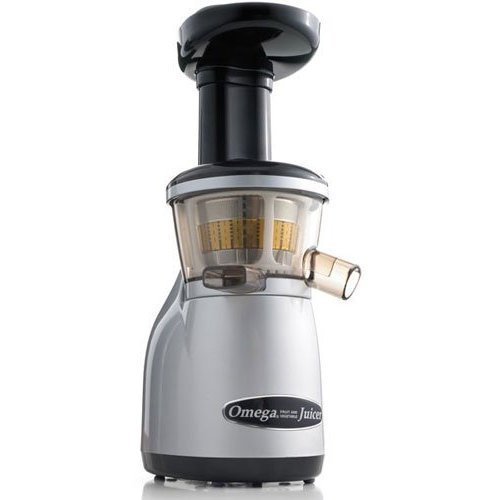Masticating vs Centrifugal Juicer? Which one’s best?
They’re both completely different animals. But after reading this, you’ll quickly know for sure which one’s best for you.
Masticating vs Centrifugal Juicer: Centrifugal Juicer

This is probably what comes to mind when you think of a juicer. It has a wide drum with a cylinder on top into which you drop the whole fruit.
Waiting inside is a blade spinning at speeds of over 10,000 rpm. This makes juicing a quick and easy affair - chuck the whole thing into the chute and press on it with the plastic ‘pusher’. The whole thing is shredded in seconds.
The pulp is ejected out the back, into a basket, and the juice pours out the front, into your juice container.
Advantages:
- Cheap machines.
- Less effort to prepare - produce doesn’t need cutting.
- Quick to juice.
Disadvantages:
- Not good for leafy greens - doesn’t yield much green juice.
- Machine doesn’t last long - high speed motor burns out quickly. Warranties last around 1 year.
- A little noisy. May not be great for early morning juicing.
- Fast blade oxygenates and heats the juice, which may reduce its nutrition.
Masticating vs Centrifugal Juicer: Masticating Juicer

Also known as a cold press juicer, a masticating juicer slowly and powerfully grinds produce with a screw, known as an auger.
This slow speed gives it some enormous benefits over the centrifugal juicer:
It extracts 2-3 times more juice from leafy greens.
A must if you want to juice leafs such as kale, spinach, parsley, cilantro, or wheatgrass.
And, in my opinion, you really should do. The point of juicing is to easily get the nutrients out of hard to eat vegetables. And there isn’t much which is harder to eat OR better for you than kale!
This extra yield saves you a lot of money every week, as the slow and powerful chewing motion extracts the maximum available juice. The pulp is much drier than pulp from a centrifugal juicer.
It’s also better at preserving nutrients. The fast spinning blade of the centrifugal juicer oxygenates the juice, reducing its nutritional value and making it spoil quicker. The centrifugal juicer’s motion also generates heat, which is speculated to damage and kill enzymes in the juice. Neither of these are problems for a masticating juicer.
Advantages:
- Extracts 2-3 times more juice from leafy greens.
- Saves you money every week.
- Quiet. Ideal for early morning / late night juicing.
- Easier to clean, so you’re more likely to use it daily.
- Warranties are up to 15 years.
Disadvantages:
- Initially costs more.
- It’s slower, and produce needs to be cut.
So, Masticating vs Centrifugal Juicer: Which should you buy?
When you look at it like this, the choice is easy.
If you’re new to juicing, get a centrifugal juicer.
Juicing’s tough at the start, so you need to make it as easy as possible to stick with.
This means you need something which is cheap, quick to juice, and easy to use.
These two juicers (here and here) both fit the bill perfectly, and are the best juicers available for under $100.
If you’re still going strong in a month, throw it on eBay and upgrade to a masticating juicer.
If you’re juicing for the long haul, get a masticating juicer.
Masticating juicers are initially more expensive than centrifugal juicers. But it saves you so much money each week, it will pay for itself within a few months. When you consider that kale alone is around $3 a bunch and that masticating juicers extract 2-3 times more juice, it’s easy to see how.
And since you’re in it for the long haul, you’ll want to know it will last. A centrifugal juicer’s high speed motor burns out quickly and is only guaranteed for 1 year. However, this entry level masticating juicer is guaranteed for a full 15 years, and its slow motor preserves the lifespan of the unit.



skye says
succinct and info rich. thanx!